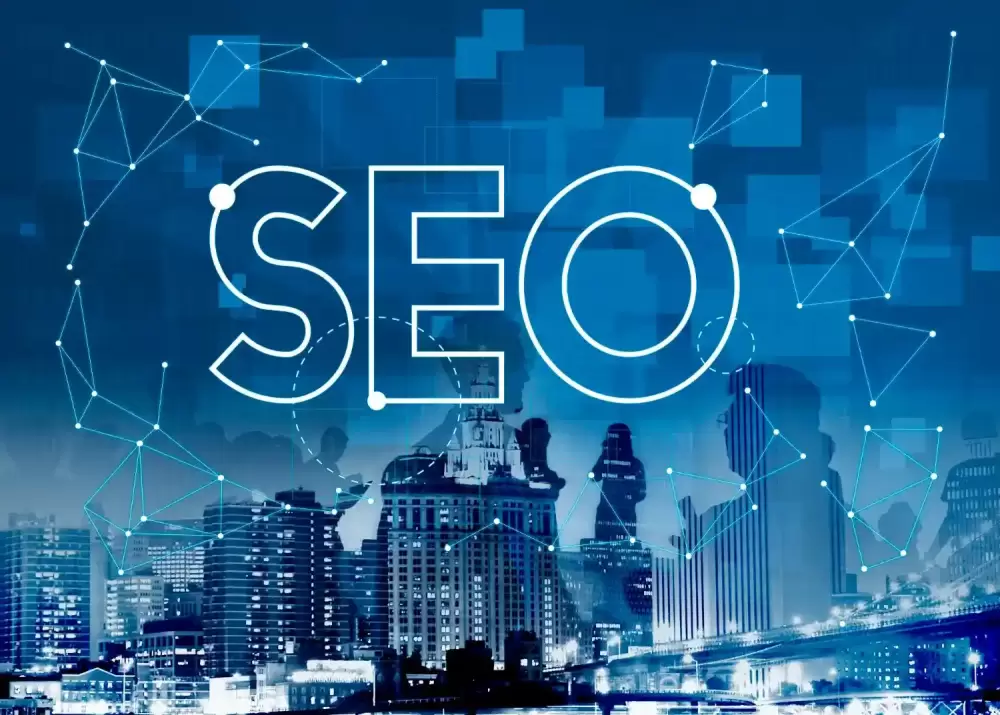What is B2B (Business to Business)?
Definition and General Characteristics of B2B
B2B, or Business to Business, refers to commerce between businesses. In this model, products or services are sold not to the end consumer but to other businesses. The most distinctive feature of B2B is the establishment of large-scale transactions and long-term business relationships. Typically, high-volume sales are involved in such commercial relationships, and supply chains exhibit a complex structure. Another important characteristic of B2B is that sales processes are longer and multi-staged.
Commonly Used Strategies in B2B Business Models
Strategies used in B2B business models can vary from sector to sector. However, some strategies are quite common. For instance, personalized marketing strategies are frequently used in the B2B world. Offering solutions tailored to customer needs plays a critical role in increasing customer loyalty. Another strategy is digital marketing and content creation. Content marketing and SEO efforts are effective in reaching the target audience and enhancing brand awareness. Additionally, customer relationship management (CRM) systems allow B2B companies to manage customer data efficiently.
Supply Chain and Collaborations in B2B
Supply chain management and collaborations are of vital importance in the B2B world. The supply chain encompasses processes from production to distribution, and the efficient management of these processes directly impacts the success of a business. Inter-business collaborations play a critical role in gaining a competitive advantage. Strategic partnerships and long-term collaborations help in reducing costs and increasing efficiency. Furthermore, the use of advanced technology and digitalization processes are becoming increasingly important to minimize disruptions in the supply chain.
Successful B2B Examples and Industry Applications
Among successful B2B examples, technology giant IBM and software company SAP stand out. IBM leads many sectors with its corporate solutions and technological innovations. SAP plays a major role in increasing the efficiency of businesses with its enterprise resource planning (ERP) software. Additionally, Bosch in the automotive sector and Schneider Electric in the energy sector are other notable examples that have achieved success in B2B business models. These companies have succeeded in leading industry applications by offering innovative solutions tailored to customer needs.
The importance of customer relationships and strategic collaborations in the B2B world is increasing day by day. Therefore, it is critical for businesses to implement B2B business models effectively for long-term success.
What is B2C (Business to Consumer)?
Definition and Basic Characteristics of B2C
B2C, or Business to Consumer, is a trade model where businesses provide goods and services directly to the end consumer. In this model, products or services are delivered directly to the consumer without an intermediary. The most notable feature of B2C is the potential to reach large audiences. Typically, e-commerce sites, retail stores, and service providers adopt the B2C model. The B2C model features fast and efficient sales processes and a dynamic structure shaped by consumer behavior and preferences.
B2C Marketing Strategies and Tactics
B2C marketing strategies are built on customer-centric approaches. Digital marketing is at the core of these strategies. Social media marketing is one of the most effective methods for B2C companies to reach their target audiences. Platforms like Facebook, Instagram, and TikTok are intensively used to increase brand awareness and customer engagement. Additionally, email marketing and search engine optimization (SEO) play significant roles in reaching potential customers. Effective advertising campaigns and content marketing are indispensable for attracting consumer interest and increasing sales.
Customer Experience and Loyalty in B2C
Customer experience and loyalty are critical factors that determine the success of a business in the B2C sector. The quality of service provided to the customer directly affects their likelihood of making repeat purchases. Personalized services and special offers not only increase customer satisfaction but also strengthen customer loyalty. A user-friendly website or mobile application makes the shopping experience easier and faster for customers. Moreover, taking customer feedback into account and providing quick solutions strengthen the bond between the brand and the customer.
Prominent Successful Examples in the B2C Sector
There are many successful examples in the B2C sector. Amazon, as a global e-commerce giant, stands out with its wide product range and fast delivery services. Similarly, Zara, a trend-setting brand in the fashion industry, draws attention with its fast fashion concept and customer-centric strategies. In the technology field, Apple has succeeded in creating a loyal customer base by keeping the user experience at the highest level. These companies lead the B2C sector with their innovative approaches and customer-centric strategies.
The B2C model aims to reach consumers directly and provide quick solutions to their needs. Therefore, a successful B2C business makes a difference with dynamic marketing strategies and excellent customer experience.
What is C2C (Consumer to Consumer)?
Definition and Characteristics of C2C
C2C, or Consumer to Consumer, is a trade model where consumers directly exchange goods and services with each other. In this model, individuals offer their own products or services to other consumers without an intermediary business. One of the most important characteristics of C2C is that users can act as both sellers and buyers. This trade model, which typically occurs through online platforms, is widely used for the sale of second-hand goods, handmade products, and various services. C2C allows users to create economic value by utilizing their surplus items.
Operation and Advantages of C2C Platforms
C2C platforms allow users to list and sell their products. These platforms typically include functions such as posting ads, searching for products, and communicating. The integration of e-commerce and social media makes the operation of C2C platforms easier. Users can announce their products to a wide audience, increasing their chances of selling. One of the biggest advantages of C2C platforms is that they offer low-cost sales opportunities. Unlike traditional trade models, there are no high rental or stock costs. Additionally, these platforms provide rating and review systems that help build trust among users.
User-Generated Content and C2C
User-generated content plays a critical role in the success of the C2C model. Reviews, comments, and ratings from users serve as a guide for other consumers. Reliability and transparency are the fundamental components of this content. Users influence the decision-making processes of potential buyers by sharing their real experiences. Furthermore, creative and original product presentations contribute to increased sales. Shares and videos on social media platforms help products reach wider audiences.
Success Stories and Example Platforms in C2C
There are many successful examples in C2C commerce. For instance, eBay is a pioneering platform where users can sell various products directly to each other. Gittigidiyor has played a significant role in popularizing C2C commerce in Turkey. Additionally, platforms like Letgo and Sahibinden.com have a large market share in second-hand goods sales. These platforms stand out with their user-friendly interfaces and the ability to reach large audiences. Success stories demonstrate how effective and widespread this model is.
The C2C model allows individuals to play a more active role in economic activities. This trade model contributes to users’ economic benefits and promotes sustainable consumption habits. C2C offers a dynamic structure that increases consumer interaction and satisfaction in the modern trade world.
Differences Between B2B, B2C, and C2C
Target Audience and Market Dynamics
The fundamental difference between B2B, B2C, and C2C models lies in the target audience and market dynamics. In the B2B (Business to Business) model, businesses sell products or services to other businesses. The target audience in this model typically consists of large-scale companies and corporate clients. In the B2C (Business to Consumer) model, businesses directly target the end consumer. The target audience in this model consists of individual consumers and includes a broad market dynamic. In the C2C (Consumer to Consumer) model, consumers sell products or services to each other. The target audience consists of individuals, and market dynamics are based on users’ individual needs.
Sales Processes and Marketing Approaches
The sales processes and marketing approaches of B2B, B2C, and C2C models also differ. B2B sales processes are generally longer and more complex. In these processes, personalized offers, long-term contracts, and extensive negotiations are at the forefront. Marketing approaches are based on strategies such as industry fairs, corporate events, and content marketing.
In the B2C model, sales processes are faster and consumer-oriented. Advertising campaigns, social media marketing, and e-commerce platforms form the core elements of B2C marketing. Customer experience and quick service are of critical importance in this model.
In the C2C model, sales processes and marketing are entirely user-focused. While individuals list and sell their products through online platforms, social media and user-generated content play significant roles. In this model, reliability and transparency are key factors in the success of sales.
Customer Relationship Management and Loyalty Programs
In the B2B model, customer relationship management (CRM) systems and loyalty programs are of great importance. Businesses offer personalized services to establish long-term relationships with their customers and strengthen collaborations. CRM software is an effective tool for managing and analyzing customer data.
In the B2C model, various programs and campaigns are organized to increase customer loyalty. Loyalty cards, discount coupons, and special offers encourage consumers to make repeat purchases. Additionally, customer service and feedback mechanisms play a significant role in ensuring customer satisfaction.
In the C2C model, rating and review systems are used to build trust among users. These systems allow buyers and sellers to trust each other and increase the platform’s success. Users encourage other users to be active on the platform by sharing their positive experiences.
Use of Technological Infrastructure and Digital Tools
The use of technological infrastructure and digital tools varies in B2B, B2C, and C2C models. In the B2B model, advanced technology and software are used to optimize business processes and increase efficiency. ERP systems, supply chain management, and email automation tools play critical roles in the digital transformation of B2B businesses.
In the B2C model, e-commerce platforms, mobile applications, and digital marketing tools come to the forefront. User-friendly interfaces and fast payment systems improve the consumer experience and increase sales. Additionally, data analytics and artificial intelligence are effectively used to provide personalized offers in B2C marketing.
In the C2C model, online marketplaces and social media platforms facilitate interaction among users. Advanced technological infrastructures are provided for users to showcase, sell, and communicate their products. Security measures and user verification systems increase the reliability of C2C commerce.
B2B, B2C, and C2C models show distinct differences in terms of target audience, sales processes, customer relationships, and technological infrastructure. Each model has its unique dynamics and strategies, which enable them to play different roles in the trade world. The effective use of these models directly impacts the commercial success of businesses and individuals.
Advantages and Disadvantages of Business Models
Advantages and Challenges of B2B
The B2B (Business to Business) model involves businesses selling products or services to each other. This model has many advantages. Firstly, high-volume sales and large-scale agreements support revenue growth. B2B agreements are generally long-term, providing a continuous revenue stream. Additionally, inter-business relationships are more reliable and sustainable at a professional level.
However, there are some challenges faced in the B2B model. Long sales cycles and complex negotiation processes can be costly in terms of time and resources. High customer expectations require constant improvement and innovation. Moreover, intense market competition makes it difficult to gain customer loyalty.
Advantages and Challenges of B2C
The B2C (Business to Consumer) model involves businesses selling products or services directly to the end consumer. The biggest advantage of B2C is its potential to reach a wide customer base. In this model, marketing and sales processes are faster, allowing direct access to the consumer. E-commerce platforms and digital marketing strategies support the rapid growth of B2C businesses.
However, there are also some challenges in the B2C model. High competition makes it difficult to maintain market share. Constantly changing consumer expectations require continuous innovation in products and services. Additionally, creating customer loyalty requires a strong brand image and effective customer service.
Advantages and Challenges of C2C
The C2C (Consumer to Consumer) model involves individuals selling products or services to each other. The advantages of this model include low-cost entrepreneurial opportunities and user-centric commerce. C2C platforms allow users to easily sell their surplus items and create economic value. Moreover, social media and online marketplaces make it easy to reach large audiences.
Challenges faced in the C2C model include trust issues and platform management. Establishing trust among users is crucial for successful trade. Rating and review systems help build trust but may not be sufficient. Additionally, platforms need to be constantly updated and user experience improved.
Suggested Solutions and Strategies for Each Model
Various solutions and strategies can be suggested for each business model. In the B2B model, customer relationship management (CRM) systems and personalized services can be effective in increasing customer loyalty. Additionally, digital transformation and data analytics can optimize business processes.
In the B2C model, digital marketing strategies and customer experience-focused approaches should be at the forefront. Social media campaigns, influencer collaborations, and personalized offers attract consumer interest and increase sales. Additionally, fast and reliable customer service increases customer satisfaction.
In the C2C model, strong rating and review systems should be established to ensure reliability and transparency. User verification processes and security measures increase the platform’s reliability. Additionally, continuous platform updates should be made to improve the user experience.
The advantages and disadvantages of business models require businesses and individuals to adopt different strategies in their commercial activities. The unique dynamics and challenges of each model can be overcome with effective solutions and strategies.
Future Trends and Predictions
Expected Changes in B2B, B2C, and C2C Business Models
As the business world rapidly changes, significant transformations are expected in B2B, B2C, and C2C business models. In B2B (Business to Business) business models, more integrated and efficient supply chains will come to the forefront due to the impact of digitalization. Personalized customer experiences and data-driven strategies will play a critical role in the future of B2B.
In the B2C (Business to Consumer) model, the rise of e-commerce will continue. With the increase in mobile commerce and the influence of social media platforms, the ways to reach consumers will become more diverse. Additionally, sustainability and ethical consumption will be among the core dynamics of B2C.
In the C2C (Consumer to Consumer) business models, the rise of the sharing economy and second-hand sales will continue. Users’ ability to create and sell their own content will be decisive for the success of C2C platforms. Security and user verification systems will be among the most important issues in this model.
Impact of Digital Transformation on Business Models
Digital transformation continues to make fundamental changes in all areas of business models. In the B2B model, digital platforms and cloud-based solutions make business processes more efficient. Digital supply chain management and customer relationship management (CRM) systems are among the areas most affected by B2B’s digital transformation.
In the B2C model, digital transformation completely reshapes the consumer shopping experience. E-commerce sites, mobile applications, and social media integrations offer consumers faster and more personalized shopping experiences. Additionally, digital marketing strategies and data analytics play a critical role in understanding consumer behavior and reaching the target audience.
In the C2C model, digital transformation provides secure and easy shopping among users. Online marketplaces and social media platforms enable individuals to reach large audiences with their products and services. Moreover, blockchain technology and digital wallets play an important role in increasing security in C2C commerce.
Role of Artificial Intelligence and Automation
Artificial intelligence (AI) and automation make revolutionary changes in business models. In the B2B model, artificial intelligence helps manage business processes more efficiently and accurately by being used in data analytics and forecasting processes. Automation reduces costs and increases efficiency in production and supply chain management.
In the B2C model, artificial intelligence plays a critical role in providing personalized shopping experiences. AI, which analyzes consumer behavior, offers special deals and product recommendations to customers, increasing sales. Automation accelerates processes in areas such as logistics and customer service, increasing customer satisfaction.
In the C2C model, artificial intelligence and automation play an important role in improving the user experience. AI-based security measures and fraud detection systems increase trust among users. Automation makes sales processes and customer support more efficient.
Strategic Recommendations for Success in the Future
To be successful in future business models, some strategic recommendations stand out. Firstly, embracing digital transformation and using technology effectively is necessary. By digitizing business processes, efficiency and competitive advantage can be achieved. Additionally, developing customer-centric strategies plays a critical role in increasing customer loyalty.
In B2B, B2C, and C2C business models, it is important to understand market trends and customer needs by using technologies such as data analytics and artificial intelligence. Sustainability and ethical business practices will provide a significant advantage in meeting future consumer and business expectations. Moreover, continuous innovation and innovative approaches will make a difference in highly competitive markets.
The key to success in the future business world is the ability to adapt to change and use technology effectively. By applying these strategies in business models, sustainable growth and success can be achieved.




